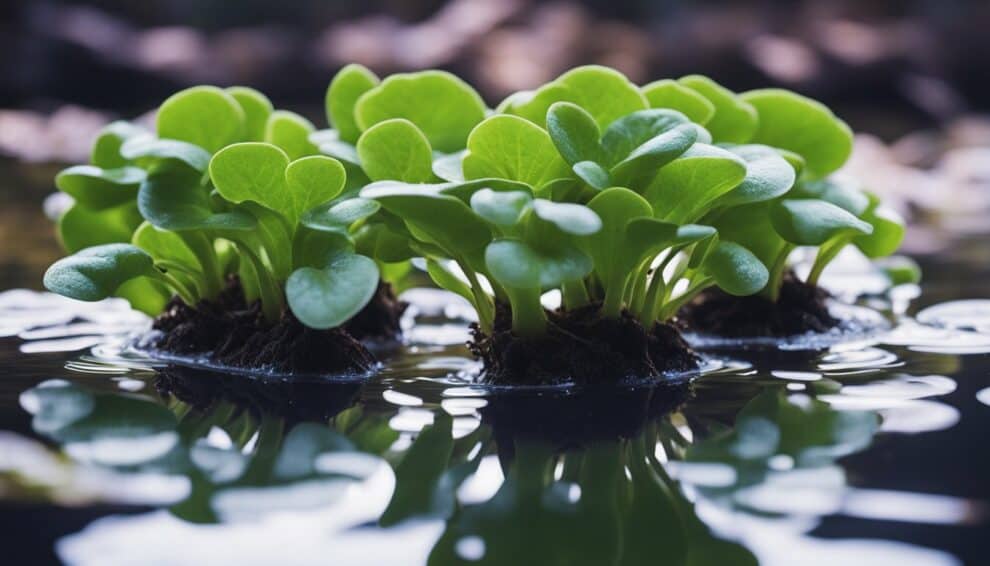African violets are a popular houseplant that are known for their beautiful blooms and easy care.
One of the best ways to expand your collection is through propagation, or creating new plants from existing ones.
While the process may seem intimidating at first, it is actually quite simple and can be done by beginners with just a few basic supplies.

To begin, it is important to understand the two main methods of African violet propagation: leaf cutting and suckers.
Leaf cutting involves taking a healthy leaf from a mature plant and using it to grow a new plant.
Suckers, on the other hand, are small plantlets that grow from the base of the main plant and can be removed and replanted.
Both methods are effective and can yield beautiful new plants with proper care.
In this article, we will explore both methods and provide step-by-step instructions for beginners looking to propagate their African violets.
Understanding African Violet Propagation
African violets are popular houseplants that are easy to propagate. Propagation is the process of creating new plants from existing ones.
It’s a great way to expand your collection and share your love of African violets with others.
Types of Propagation Methods
There are several ways to propagate African violets, including:
-
Leaf cutting: This is the most common method of propagation. A healthy leaf is removed from the parent plant and rooted in soil or water.
After a few weeks, new roots and a baby plant will form.
-
Sucker division: This method involves separating a baby plant (sucker) from the parent plant and planting it in its own pot.
-
Crown division: This method involves dividing the parent plant into smaller sections, each with its own roots and leaves.
Benefits of Propagating African Violets
Propagating African violets offers several benefits, including:
-
Cost savings: Buying new plants can be expensive, but propagating your own plants is a cost-effective way to expand your collection.
-
Sharing with others: Propagating your African violets allows you to share your love of these beautiful plants with friends and family.
-
Preserving rare varieties: Some African violet varieties are rare and difficult to find.
Propagating these plants ensures that their beauty will be preserved for generations to come.
In conclusion, understanding African violet propagation is essential for beginners who want to expand their collection and share their love of these beautiful plants with others.
By learning about the different propagation methods and their benefits, you can create new plants and preserve rare varieties for years to come.
Preparing for Propagation

Choosing Healthy Parent Plants
The first step in African violet propagation is selecting healthy parent plants.
It is important to choose plants that are disease-free and have no signs of insect damage.
Look for plants that have strong stems, healthy leaves, and a good root system.
It is also important to select plants that have not bloomed recently, as they will be more likely to produce new growth.
Gathering Necessary Supplies
Before beginning the propagation process, gather all necessary supplies.
This includes a sharp knife or razor blade, rooting hormone, small pots or containers, and a well-draining potting mix.
It is also helpful to have a spray bottle filled with water for misting the cuttings.
It is important to use clean and sterilized tools and containers to prevent the spread of disease.
To sterilize containers, wash them in hot, soapy water and rinse well. Then, soak them in a solution of one part bleach to nine parts water for 10 minutes.
Rinse thoroughly and allow them to air dry.
By choosing healthy parent plants and gathering the necessary supplies, beginners can set themselves up for success in African violet propagation.
Step-by-Step Propagation Guide

African violets are a popular houseplant due to their vibrant colors and easy care.
One of the best things about African violets is that they are easy to propagate. Here are three simple techniques for propagating African violets.
Leaf Cutting Technique
The leaf cutting technique is the most common way to propagate African violets. Here are the steps:
- Choose a healthy leaf from the mother plant.
- Cut the leaf stem close to the base of the plant.
- Trim the leaf stem to about 2 inches in length.
- Dip the stem in rooting hormone.
- Plant the stem in moist soil, burying the stem up to the base of the leaf.
- Cover the pot with a plastic bag to create a humid environment.
- Place the pot in a warm, bright location, but out of direct sunlight.
- Keep the soil moist, but not waterlogged.
- After a few weeks, roots should start to form. Once the roots are established, remove the plastic bag.
Division Method
The division method is another way to propagate African violets. Here are the steps:
- Remove the plant from the pot and gently separate the roots.
- Cut the plant into sections, making sure each section has a healthy root system and at least one leaf.
- Plant each section in a separate pot with fresh soil.
- Water the new plants and keep them in a warm, bright location, but out of direct sunlight.
- Keep the soil moist, but not waterlogged.
Rooting and Potting
The rooting and potting method is a bit more involved, but it can be a good option if you want to propagate a lot of plants at once. Here are the steps:
- Remove the plant from the pot and gently separate the roots.
- Cut the plant into sections, making sure each section has a healthy root system and at least one leaf.
- Dip the cut ends of the stems in rooting hormone.
- Plant each stem in moist soil, burying the stem up to the base of the leaf.
- Cover the pot with a plastic bag to create a humid environment.
- Place the pot in a warm, bright location, but out of direct sunlight.
- Keep the soil moist, but not waterlogged.
- After a few weeks, roots should start to form. Once the roots are established, remove the plastic bag.
- Transplant the new plants into separate pots with fresh soil.
- Water the new plants and keep them in a warm, bright location, but out of direct sunlight.
- Keep the soil moist, but not waterlogged.
Caring for New African Violet Plants

Once you have successfully propagated your African violets, it is important to care for them properly to ensure their growth and health.
Here are some tips for caring for your new African violet plants.
Optimal Growing Conditions
African violets thrive in warm, humid environments with bright, indirect light.
They prefer temperatures between 65-75°F (18-24°C) and humidity levels of 40-60%.
It is important to keep them away from drafts and direct sunlight, as this can damage their delicate leaves.
Watering and Feeding
Proper watering and feeding are crucial for the health of African violets.
They should be watered from the bottom, by placing the pot in a tray of water and allowing the soil to soak up the water.
It is important not to overwater, as this can lead to root rot.
African violets also require regular feeding with a balanced fertilizer, such as a 20-20-20 formula.
Troubleshooting Common Issues
African violets can be prone to a few common issues, such as crown rot, leaf spot, and powdery mildew.
To prevent these issues, it is important to keep the plant in a well-ventilated area and avoid getting water on the leaves.
If you notice any signs of disease, such as brown spots on the leaves or wilting, take action immediately by removing affected leaves and treating the plant with a fungicide.
By following these simple steps, you can ensure the health and growth of your new African violet plants.
Frequently Asked Questions

What are the basic steps for propagating African violets for beginners?
The basic steps for propagating African violets for beginners are quite simple. First, select a healthy leaf from the parent plant.
Cut the leaf stem about an inch long and remove the bottom leaves. Insert the leaf stem into a pot filled with moist soil and cover it with a plastic bag.
Keep the pot in a warm and bright location, and mist the leaves regularly. After a few weeks, the leaf will start to form a small plantlet.
Can you propagate African violet leaves directly in water?
While it is possible to propagate African violet leaves directly in water, it is not recommended for beginners.
Water propagation requires more attention and care to prevent the leaves from rotting.
It is also less reliable than soil propagation as the roots may not form properly.
What are the different methods for propagating African violets?
The two main methods for propagating African violets are leaf cutting and offset division.
Leaf cutting involves cutting a healthy leaf from the parent plant and planting it in soil until it forms a new plant.
Offset division involves separating the baby plants, or offsets, from the parent plant and planting them in their own pots.
How long does it typically take for an African violet cutting to root?
It typically takes about 2-3 weeks for an African violet cutting to root.
However, the rooting time may vary depending on the temperature, humidity, and lighting conditions.
What is the process for transplanting African violet offsets?
To transplant African violet offsets, gently remove them from the parent plant and separate them from each other.
Plant each offset in its own pot filled with moist soil, and water it gently.
Keep the newly transplanted offsets in a warm and bright location, and mist the leaves regularly.
When can you expect a newly propagated African violet to flower?
It may take several months for a newly propagated African violet to flower.
The plant needs to establish its root system and grow new leaves before it can produce flowers.
However, with proper care and attention, the plant will eventually bloom and reward the grower with beautiful and colorful flowers.













